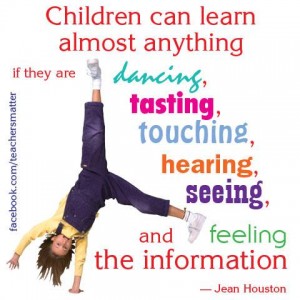12 ways to add more movement into your classroom
For thousands of years the human body has been walking, sleeping, leaning, running, doing or squatting. As Howard Gardner states , “I believe in action and activity. The brain learns best and retains most when the organism is actively involved in exploring physical sites and materials and asking questions to which it actually craves the answers. Merely passive experiences tend to attenuate and have little lasting impact.”
, “I believe in action and activity. The brain learns best and retains most when the organism is actively involved in exploring physical sites and materials and asking questions to which it actually craves the answers. Merely passive experiences tend to attenuate and have little lasting impact.”
The body has not adapted to the chair. Sitting is hard work, bad ergonomics and runs the following risks: poor breathing, strained spinal column and lower back nerves, overall body fatigue plus less opportunity for implicit learning.
Practical suggestions
Use drama and role-plays: use daily or weekly role-plays to reinforce ideas and concepts. Enrol students into playing charades to review main ideas of a lesson or topic. Ask students to write and perform sixty second TV commercials to advertise what they have learned.
Use dramatic arts as a vehicle:Students can use maths skills to design and build a set for the theatre. Maths skills will include measuring, estimating, calculating budgets, ordering supplies and determining break-even points.
Encourage students to dance: Make it fun with no embarrassment.
Use a variety of different play with young children: Exploratory play such as scavenger hunts, hide and seek and make- believe; exercise play including aerobics, running, chasing and dancing; group and team games such as relays and sports; adventure and confidence play using ropes courses and trust walks.
Support physical education: Use flexibility and conditioning programmes with purposeful goals. Play ‘new games’ often where there is no losing and everyone wins. Design activities that include everyone. Studies show between 30-40 minutes of daily physical exertion is most beneficial.
Less sitting: Allow your students to stand, squat, walk or lie down when working. Einstein once commented that the best way for him to think, was to talk and stroll.
Energisers: Here are some ideas; use your body to measure things around the room, play Simon Says, do team jigsaw processes with huge poster mind-maps.
Active games: ball toss for revising, retelling or idea generation. Rewrite the lyrics to familiar songs with current content from lessons.
Cross-laterals: give students a 5 minute ‘mental fitness’ break during class to switch on both sides of the brain and enhance learning.
Stretching: Get students up out of their chairs to stretch and increase blood flow throughout the body and brain. Do this as a whole class or in small groups where students take turns at leading the group.
Encourage sculpture and clay model building: visual-spatial skills are developed from clay work as well as patience and attention to detail.
Use kinesthetic models to explain key concepts: use balloons, blocks, marshmellows, straws, sand etc to demonstrate analytical concepts. Remember, speed of teaching is not the goal, rather allowing students to build models and learn from the process.
Tags: Kinesthetic, learning, learning styles, movement, strategies
Published on Saturday, February 8th, 2014, under Learning
